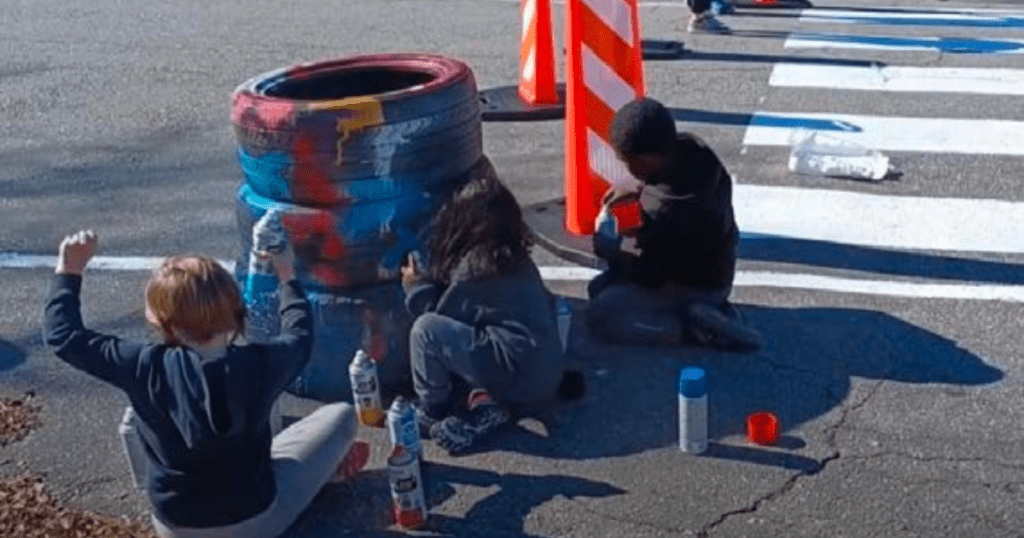
By Rachel Cotner
Quick build demonstration projects are a powerful tool to improve the safety of streets without requiring piles of red tape, permanent commitment or substantial funding. A group of neighbors can come together and make a simple change in a matter of hours. Also known as pop-ups or tactical urbanism projects, demonstration projects installations are gaining momentum in many cities around the US and the world.
In 2021, Congress passed a bill funding a new program called Safe Streets For All (SS4A). SS4A was intended to fund changes to local streets that would help us get closer to Vision Zero or zero deaths on our roadways. The version that made it into the Bipartisan Infrastructure Act was unlike anything we have seen before. Instead of requiring the majority of funds for shovel ready projects, they required that 40% of the 5 billion dollars be allocated to planning grants with the remaining 60% left for installation. Given that radical change in planning funding, the USDOT was free to allow local demonstration projects to count as part of the planning process.
America Walks recently led a demonstration project in Little Rock, Arkansas as part of the Arkansas State Walking College program. Fellow Everett Gooch, had some ideas to connect a residential neighborhood to all the amenities of Downtown Little Rock including the Arkansas River Trail. In partnership with the Arkansas Department of Health, and with the help of local organizations Our Little Rock and the Pettaway Neighborhood Association, we were able to bring one of those ideas to life.
When potential changes to a street are announced in public meetings, they can come with significantly vocal opposition, so we took a different approach. The America Walks team (Ian Thomas, Nicole Smith and Rachel Cotner) invited the entire neighborhood, community leaders, and advocates to a workshop to gain insight to the end results that the community wanted to see. While “narrowing roads” and “adding stop signs” may not be the initial answer, “slowing speeding cars” is something most people can agree is good in front of their homes and businesses.
The workshop included introductions from city and community leaders, some background information collected by the planning team, and a series of walk audits along the Commerce Street corridor. After participants walked through the neighborhood, everyone came back to share their thoughts and how their impressions had changed after experiencing the walk.

Day 2 was build day! One of the busiest intersections along Commerce was selected to get a facelift. The demonstration project was granted temporary approval from the city, and included paint, reclaimed tires and some supplies from a local barricade distributor. The event included the build itself, but it was also a neighborhood party. Children came out to paint tires and there were games and food to entertain volunteers between paint projects.
The results speak to the power of small changes to public space. Traffic studies conducted before and during the installation show a reduction in maximum speed of nearly 30 miles per hour. Average speed was reduced to 5 miles per hour less than the posted speed limit, and enforceable violations were reduced significantly.
Interested in getting involved in local change? Check out this link from our resources page!